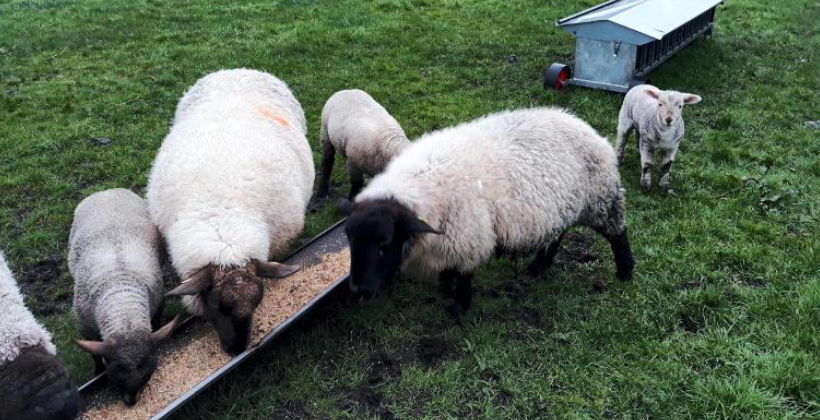Investigating the Causes of Tailend Lambs
30 January 2023A higher proportion of tailend lambs than expected can be an indication of nutritional inadequacy or underlying health issues. They represent a high cost and high-risk group and can impact the performance of the other animals on the farm by taking up resources. Therefore, it is worth considering the causes of these poorly performing lambs.
The first point of call is teasing out ewe management factors. For instance, are most lambs in this group from first time lambers. This is often the case and would point to treating these mothers – ewe lambs or gimmers – with a bit more attention through pregnancy and into lactation.
Is there a pattern with body condition of the ewes? Not many will be able to trace the lambs back to their mother’s condition (which would be ideal) but asking whether the ewes were leaner at lambing time this year than usual, and could that be a cause of greater light lamb numbers? Lesley Stubbings and Matthew Blyth linked lamb eight-week weights and the proportion of light lambs to ewe condition in their analysis at Didling Farms. They found ewes on target condition through pregnancy was worth over two kilograms to the average eight-week weight of lambs compared to years when ewes were under target. Condition score of the ewes now could be determining your tailend lambs next year.
There could be a ram impact. Are a lot of the tailend progeny from one ram? Again, it would be ideal to trace the lambs back; those using electronic identification (EID) and recording software can do this, otherwise check the Scan weight Estimated Breeding Value (EBV) when purchasing new rams.
In terms of nutrition, energy is the first nutritional limitation – have they got enough grass? The dry summer last year did impact grass growth – we cannot manage the weather but consider multispecies swards for greater drought tolerance and rotational grazing to give the pasture rest and improve utilisation of the limited grass supply. Weaning from eight weeks to allow allocation of the best pasture to the lambs is also worth weighing up, although there will be more of a weaning check and quality pasture is required.
Parasitic worms can cause intestinal damage that the lambs never fully recover from. Reducing exposure to worms by avoiding grazing on the fields grazing in later pregnancy/lambing/turnout where possible, from six weeks old. Avoid grazing below 5cm, where the lambs are more likely to have exposure to larvae. Look out for parasite forecasts (NADIS webpage) and speak to your vet to judge wormer use and timing.
After considering these issues, we finally consider cobalt deficiency, which is common across most of Scotland. Testing forage, soils, bloods and liver tissue all help understand whether cobalt supplementation is worthwhile. Mineral power, drenches, B12 injection or boluses may improve growth rates. We recommend determining whether this is the case with a farm trial (e.g. provide a bolus to a random proportion of the lambs and mark them and compare growth rates or sale data with the untreated lambs).
The tailend lambs may get a good price with the price uplift often seen at the start of the year but consider the cost for the maintenance of these lambs and the knock-on impacts on the breeding ewes. Investigate now to try and reduce the tailend numbers next year.
Poppy Frater
Sign up to the FAS newsletter
Receive updates on news, events and publications from Scotland’s Farm Advisory Service

